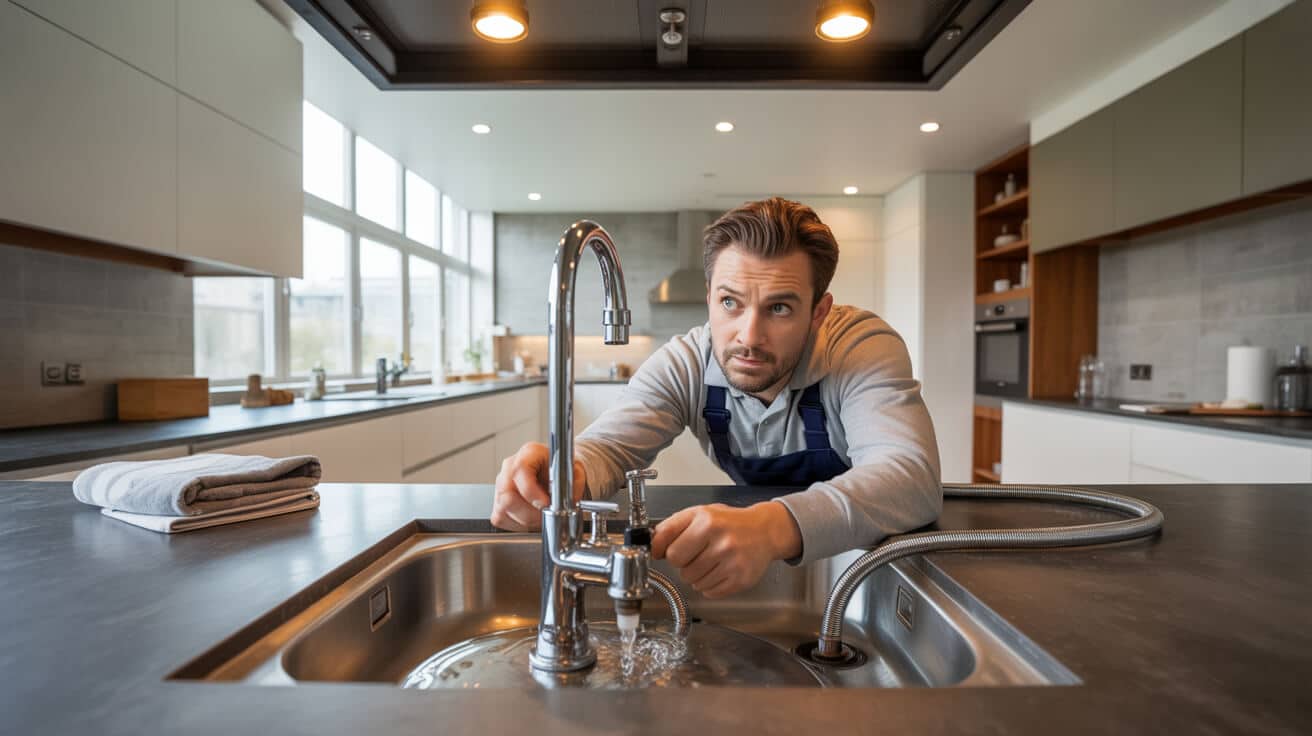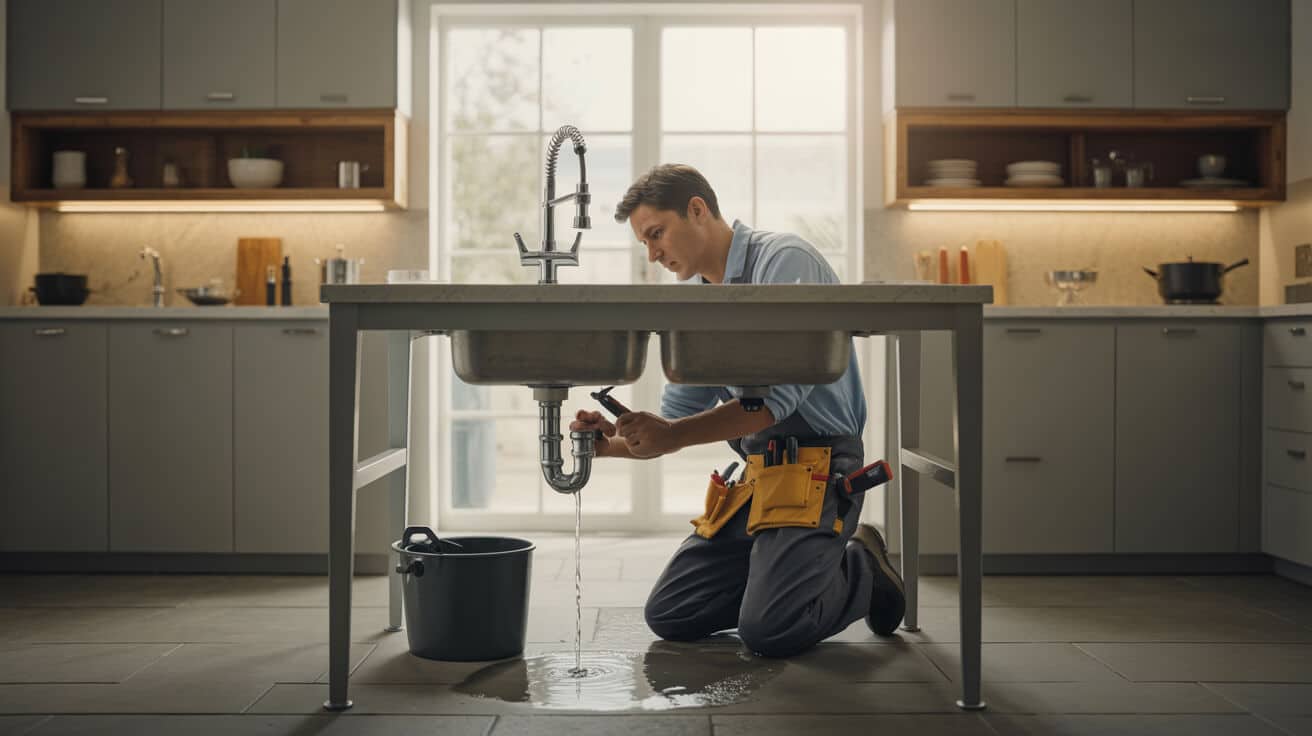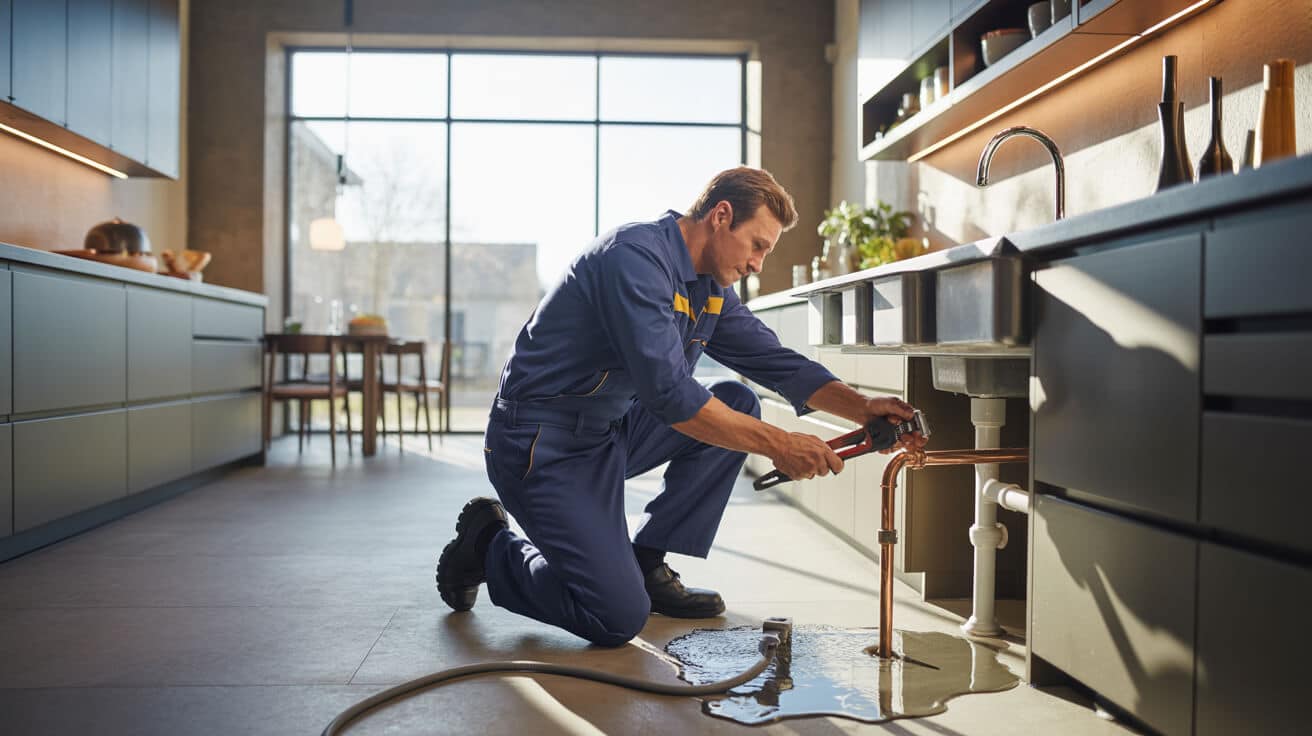Water leaks are one of the most disruptive threats to modern property infrastructure. Their onset can be sudden or insidious, with consequences ranging from cosmetic staining to catastrophic structure loss, business disruption, and substantial financial liability. Emergency repair is more than a simple fix: it is a process of expert assessment, rigorous decision-making, and regulatory accountability that safeguards your home, business, or tenancy against immediate crisis and future recurrence.
Plumbing and heating failures can result from materials fatigue, weather extremes, accidental damage, or design errors. The complexity and scale of these failures demand both technical depth and clear communication, especially across multi-occupancy buildings, rented premises, and compliance-heavy commercial estates. Plumbers 4U’s service model illustrates how industry best practice integrates specialist knowledge, safety standards, and client reassurance to transform emergencies into managed recoveries, ensuring your property is left healthier and more secure for the future.
Etymology or name origin
The phrase “water leak” derives from the Old English lecgan, meaning to trickle or ooze, and evolved to describe any unintended release of water within a structure. “Emergency repair” originated as a trade term in the context of urgent interventions, first applied to life-safety critical systems and later expanded to encompass unplanned, damage-limiting actions in the built environment. Within the plumbing and heating sector, these terms converge to articulate both the urgency and technical specificity demanded by uncontrolled water loss.
Overview and context
Plumbing and heating systems are a lattice of interconnected pipes, valves, tanks, and fixtures designed for reliable water distribution and heat control throughout every building. These systems face continuous exposure to thermal cycling, pressure fluctuations, chemical erosion, and wear from human use. Most leaks originate where the system is weakest: joints, connection points, isolation valves, flexible hoses, or appliance interfaces. Weather changes—especially cold snaps, thaw cycles, and storm-driven flooding—dramatically increase the risk of pipe rupture or seal breakdown.
Your property’s risk profile is shaped by numerous factors including:
- Material type and installation age: Copper, plastic (PEX, PB), steel, and lead display different ageing characteristics and response to pressure or temperature
- Property layout and use: Multi-storey, high-density buildings often feature complex riser and branch pipework, while commercial facilities have large-scale DHW (domestic hot water), process water, or heating distribution networks
- Usage intensity: Rental and holiday properties with rapid tenant turnover or infrequently used spaces are more susceptible to undetected leaks
Impact from leaks extends far beyond physical water loss:
- Direct damage: plaster, flooring, insulation, furniture, fixtures, electronics
- Indirect damage: mould growth, rot, electrical faults, increases in insurance premium, occupancy loss
- Business effects: operational downtime, lost revenue, reputational harm
Timely, systematic emergency repair is the critical differentiator between minor disruption and major loss, placing a premium on both anticipation and technical response.
History
Earliest methods
Early interventions were fundamentally reactive and resource-limited. Leaks were typically discovered by sight or sound, with repairs fashioned from tarred cloth, wooden staves, or hammered lead sleeves. Ancient Roman, Byzantine, and Victorian municipal engineers developed techniques for joint-sealing and basic pipe reinforcement, but most materials suffered from limited durability and sporadic maintenance.
Standardisation and regulation
The 19th and 20th centuries saw the introduction of formal water bylaws, calibrated pipe materials (BS 2871, WRAS standards), and standard repair techniques such as the use of compression and soldered fittings. The rise of high-pressure municipal supplies, indoor sanitation, and central heating demanded systemic approaches to safety, with plumber registration schemes (WaterSafe, Gas Safe, CIPHE) and mandatory compliance documentation (e.g., G3 for unvented hot water systems) embedded into routine service protocols. Insurance and regulatory bodies began mandating certified emergency response logs for property management and landlord portfolios.
Recent advancements
The technological leap in the 21st century brought non-invasive diagnostics—thermal imaging cameras, acoustic profiling, molecular tracer gases, and connected sensors—into the field. Moisture mapping, digital logbooks, and cloud-based job management enable both rapid response and data-rich aftercare. Service firms such as Plumbers 4U routinely blend these innovations with legacy system know-how for comprehensive coverage from city flats to high-value commercial sites.

Concept and description
A water leak, in plumbing and heating context, is any unintended movement of water outside prescribed containment—from a pipe, tank, fitting, appliance or heating element—sufficient to present risk or ongoing harm. Emergency repair encompasses both the rapid, often temporary, containment of the incident and the follow-up actions required for system restoration, documentation, and future-proofing.
Leak typology
- Latent/slow leaks: Undetectable by casual inspection, revealed by water metre anomalies, mould patches, or gradual damp spread
- Acute/obvious leaks: Audible discharge, pooling, flooding, or visible spray, often accompanied by a rapid drop in system pressure or heating performance
- Recurring leaks: Repeat failures in the same location, suggestive of systemic design faults or underlying corrosion/pressure problems
Stages of emergency response
- Detection: Confirmation through sensory input, smart metres, or leak alarm
- Isolation: Shutting off mains or zone valves to contain immediate damage
- Diagnosis: Identification of leak location, cause, and affected infrastructure
- Repair: Application of mechanical or joint-based fix, with material compliant to WRAS/water safety standards
- Aftercare and prevention: Removal of standing water, drying, restoration of affected areas, and measures to reduce recurrence
Functionality, purpose, and applications
Property protection
Effective emergency response shields your premises from the most substantial risks of water damage, preserving asset value, supporting safety certifications, and supporting an insurable risk profile for all types of buildings.
Restoration of essential services
Rapid containment and repair restore vital heating and water services, supporting comfort, hygiene, operational continuity, and tenant/livelihood security.
Applications across property types
Emergency water leak repair is relevant to:
- Owner-occupied residential: Ensuring habitability, mortgage compliance, and health
- Rented dwellings: Legal responsibility to protect your tenants’ health and possessions, with evidence-based aftercare
- Commercial premises: Business interruption, insurance claim processing, and stewardship of customer trust
- Public sector and social housing: Asset protection, service continuity, and regulatory reporting obligations
Preventive and compliance aspects
Long-term effectiveness is achieved through scheduled inspections, system upgrades, and client education in risk areas such as pipe insulation, heating pre-winter checks, or installation of leak alarms.
Classifications, types, and variants
Leak sources
| Mechanism | Typical Features | Risks |
|---|---|---|
| Pipe burst | Sudden, high-volume, often seasonal | Flooding, loss of pressure, electrical hazards |
| Joint failure | Drip or slow weep, at connectors | Hidden damage, progressive mould, costly to trace |
| Appliance leak | From washers/dishwashers, flex hoses | Quick pooling, potential for unnoticed long-term floor/wall damage |
| Tank/cylinder | Rust, seam failure, valve blow-off | High water volume, scalding risk, significant downtime |
| Drain/waste | Blockage, trap or vent stack split | Odour, health risk, may affect multiple units in a building |
By system:
- Cold mains: Direct risk to fixtures, potential contamination
- Hot water/network: Stat failure, scaling, pressure release overflow
- Heating loop: Loss of circulation, airlocks, boiler lockout
- Sanitary waste: Structural and health complications, especially in communal lines
By exposure:
- Visible: Immediate identification, easy access for repair
- Concealed: Behind plaster, in floors/ceilings, requiring advanced diagnostics
Systems, tools, and methodologies
Plumbing infrastructure affected
- Mains/branch pipework:
- Isolation valves (ball, gate, check):
- Expansion vessels, blending/thermostatic mixing valves:
- Cylinder, tank, or heating circuit elements:
- Fixtures, flex feeds, push-fit and compression joints:
Detection and diagnostic tools
| Tool | Use Case | Advantages |
|---|---|---|
| Visual inspection | Surface leaks, pooling | Low-tech, fast |
| Acoustic listening | Hidden pressurised leaks | Non-invasive, accurate location |
| Moisture metre | Wall/floor dampness | Quantifies and maps spread |
| Tracer gas/UV dye | Pipe/floor concealment | Pinpoints elusive escape routes |
| Thermal imaging | Underfloor/radiator leaks | Maps heat gradient, safe |
| Endoscope | Wall/floor cavity viewing | Visual check without demolition |
Repair techniques
- Temporary: Clamp, self-amalgamating tape, pipe freezing for containment
- Permanent: Pipe section replacement, compliant push-fit/compression, full-joint renewal, appliance hose upgrade, tank resealing
- Documentation: Photographic evidence, engineer logs, formal job reports
- Health and safety: PPE, portable RCDs, segregation of wet/dry zones, legal notifications as required
Restoration equipment
- Wet vacuums, dehumidifiers, anti-microbial washes:
- Monitoring systems for follow-up risk reduction:

Stakeholders and entities involved
Residents, tenants, and property owners
Your swift reporting, access facilitation, and provision of information are essential for effective repairs. Landlord or freeholder responsibilities extend to record retention, anticipated response times, and tenant liaison.
Service firms and technicians
Responsive deployment of certified engineers, as provided by Plumbers 4U, ensures technical and legal compliance. Skill depth, equipment quality, and transparent communication protect property value and reduce business interruption.
Landlords and property managers
You are accountable for statutory repairs, proof of service visits, and coordination of insurance claims. Clarity, timeliness, and evidence of procedural diligence define your organisational credibility and regulatory conformity.
Commercial and facilities directors
In high-value or multi-use spaces, rapid escalation, contingency planning, and precise documentation are vital. Processes must anticipate operational impact and align closely with client or tenant SLAs.
Insurers, loss adjusters, and regulators
Robust documentation, transparent communications, and compliant works are required for claims acceptance, legal protection, and regulatory audit.
Legal, regulatory, and ethical considerations
Statutory and code guidance
- Water Regulations 1999 (UK): Materials approval, installation/risk protocols.
- Building Regulations—Part G/H/L: Safety, drainage, insulation, and water conservation.
- G3 unvented system regulation: Engineer qualification required for any work on pressurised hot water storage.
- Landlord and tenant law: Health and safety requirements, repair response times, and disclosure obligations.
- Insurance compliance: Claims documentation, specified repair standards, timeline adherence.
Certification and standards
- WRAS/WaterSafe registration: for materials and engineer background
- Gas Safe: (heating-linked leaks near boilers/cylinders)
Delivery ethics
- Pricing transparency: and clear scope disclosure
- Health/safety respect: for your property and tenants
- Full compliance logs: in line with insurance/landlord/tenant audit protocols
Performance metrics, data, and measurements
Industrial KPIs
| Metric | Measurement Approach | Typical Standard |
|---|---|---|
| Response time | Call-to-site | <1 hour for emergencies |
| Repair recurrence | Same-fault rate | <5% within 12 months |
| Cost of damage | Insurance or estimate | £500–£5,000 typical range |
| Service rating | Tenant/owner feedback | 4+/5 for major UK providers |
| Documentation accuracy | Regulatory audit | 100% compliance, no omissions |
Impact and reporting
- Detailed job logging: validates service and compliance
- Follow-up surveys: capture user confidence, identify aftercare needs
Challenges, barriers, and limitations
Technical constraints
- Concealed system runs: Floor, wall, or roof piping requiring destructive tracing or specialist tools
- Part unavailability: Out-of-hours or rare fitting delays
- Complex multi-tenant property: Coordination across occupier, agent, landlord, and common parts
Operational and economic factors
- Service access: Keyholder, remote landlord/tenant scenarios, disabled or at-risk populations needing rapid escalation
- Insurance ambiguities: Delayed claim processing, cover exclusions (wear and tear, historic neglect)
Regulatory and communication gaps
- Documentation lapses: Incomplete logs limiting claim recovery
- Varying local enforcement: Inconsistent adoption of best-practice across authorities
Client experience
- Disruption, stress, and confusion: in urgent situations, mitigated only by clear, compassionate, information-rich communication and proactive aftercare
Restoration and aftercare
Structural/Environmental protocols
- Drying and decontamination: Use of industry equipment to eliminate persistent damp, avoid secondary mould or health risks
- Surface restoration: Plastering, painting, floor recovery, furniture and contents management
Prevention and resilience
- Risk-point insulation: Lagging vulnerable pipes, installing frost protection, routine maintenance
- Leak alarm upgrades: Recommending and fitting devices suited to your building’s unique exposure profile
Monitoring and follow-up
- Scheduled checks: Annual service or insurance review, especially for risk-prone property types (student, HMO, holiday lets)
- Education: Clear guidance for you on stopcock location, isolation procedures, routine awareness
Health focus
- Mould risk elimination: Advice or contractor referral for persistent issues
- Tenant/worker safety: Hygiene certification where required
Impact, influence, and legacy
Economic impact
Professional water leak repair delivers clear cost advantages—limiting immediate damage and suppressing latent risk (mould, structure, electrical). Consistent, compliance-led service, such as provided by Plumbers 4U, improves market valuation, reduces insurance costs, and builds trusted tenant or user relationships.
Social and cultural consequences
An organisation’s or landlord’s responsiveness frames perceptions of care and competence. Safe, dry, and restored premises foster trust, long-term occupancy, and reputational strength. Technical depth, regulatory conformance, and documented transparency create enduring value for all parties.
Health legacy
Active aftercare protocols ensure environmental health, reducing the incidence of mould, indoor allergens, and waterborne pathogens. This extends directly to your wellbeing as an occupant, employee, or landlord, now and for future cycles of property use.
Future directions, cultural relevance, and design discourse
Emerging trends centre around non-intrusive leak detection, predictive maintenance algorithms, enhanced diagnostics, regulatory convergence, and building systems that prioritise resilience and rapid restoration. Shifting cultural attitudes increasingly recognise preventive systems and scheduled maintenance not as luxuries, but as essentials for modern, healthy, and economically stable properties.
Design practices for both new installations and refurbishments are evolving to embed leak detection and isolation function as standard—incorporated visually into property handbooks, leasing documents, and asset management software. The sector is moving towards transparency-by-default: clear reporting, multi-channel communication, and partnerships between service providers like Plumbers 4U and property managers, minimising future disruption and loss.

